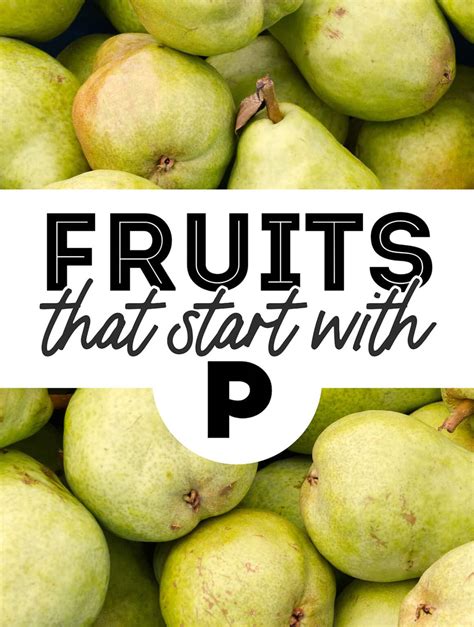When it comes to exploring the world of fruits, there’s a vast array of options to choose from, each with its unique taste, texture, and nutritional benefits. Focusing on fruits that start with the letter “P” can lead us to some fascinating and delicious discoveries. Here’s a dive into some popular “P” fruits, their characteristics, and what makes them stand out:
Papaya: Known for its soft, buttery consistency and sweet musky flavor, papaya is a tropical fruit that grows on an herbaceous plant. It’s rich in an enzyme called papain, which aids digestion, and it’s also an excellent source of vitamins A and C. Papaya is often eaten fresh, used in smoothies, or as an ingredient in exotic dishes.
Pineapple: A fruit that’s synonymous with tropical climates and hospitality, pineapple is known for its tough, waxy exterior and juicy, sweet interior. It’s an excellent source of vitamin C and manganese, a mineral that plays an essential role in bone health and metabolism. Pineapples are enjoyed fresh, in desserts, as a topping for yogurt or oatmeal, and even as a pizza topping in some cuisines.
Peach: With its velvety skin and sweet, tangy flesh, peaches are a beloved fruit around the world. They’re rich in vitamins A and C, potassium, and fiber. Peaches are a versatile fruit, enjoyed fresh, baked in pies, blended into smoothies, or grilled as a unique dessert.
Pear: Pears are known for their smooth, thin skin and tender flesh. They come in a variety of flavors and textures, from the soft and sweet Bartlett to the crisp and tangy Anjou. Pears are a good source of dietary fiber, vitamins C and K, and potassium. They’re often eaten fresh, used in salads, or cooked into desserts like pies and tarts.
Pomegranate: This ancient fruit is prized for its arils - the juicy, gem-like seeds surrounded by a spongy, white membrane. Pomegranates are rich in vitamins C and K, potassium, and fiber, as well as powerful antioxidants that have been linked to several health benefits. The arils can be eaten fresh, used in salads, or as a garnish for dishes, while the juice is popular for its nutritional value.
Persimmon: With its vibrant orange color, the persimmon is a visually striking fruit. It’s sweet and tangy, with a flavor that’s often described as a combination of honey and dates. Persimmons are a good source of vitamins A and C, potassium, and fiber. They can be eaten fresh when ripe, used in baked goods, or dried to make a sweet, chewy snack.
Passion Fruit: This exotic fruit has a unique appearance and taste. The outer skin is often purple, but can also be yellow or red, and the inside contains juicy, sweet arils that surround black seeds. Passion fruit is rich in vitamins A and C, potassium, and iron. It’s often eaten fresh, used in desserts, or as a topping for ice cream and yogurt.
Plum: Plums are a diverse group of fruits that come in many varieties, including the damson, greengage, and Victoria plum. They’re known for their sweet and sometimes tart taste and are a good source of vitamins A and C, potassium, and fiber. Plums are enjoyed fresh, used in jams and preserves, or baked into pies and cakes.
Each of these “P” fruits not only offers unique flavors and textures for our culinary enjoyment but also packs a punch when it comes to nutritional benefits. Incorporating a variety of fruits into our diets can lead to a healthier and more balanced lifestyle, and exploring the world of “P” fruits is a delicious way to start that journey.
What are the health benefits of eating fruits like papaya and pineapple?
+Fruits like papaya and pineapple are rich in vitamins, minerals, and antioxidants. Papaya contains an enzyme called papain that aids digestion, while pineapple is an excellent source of vitamin C and manganese, supporting immune function and bone health.
How can I incorporate more “P” fruits into my diet?
+There are many ways to enjoy “P” fruits. You can eat them fresh, use them in smoothies, bake them into pies, or even add them as a topping for yogurt or oatmeal. Experimenting with different recipes and combinations can help you find your favorite ways to incorporate these fruits into your meals and snacks.
What are some lesser-known “P” fruits worth trying?
+Besides the well-known papaya and pineapple, fruits like persimmon, passion fruit, and pomegranate offer unique flavors and nutritional benefits. Persimmons have a sweet, tangy taste, while passion fruits are known for their exotic flavor and high content of vitamin C and potassium. Pomegranates are rich in antioxidants and offer a sweet and juicy snack.



